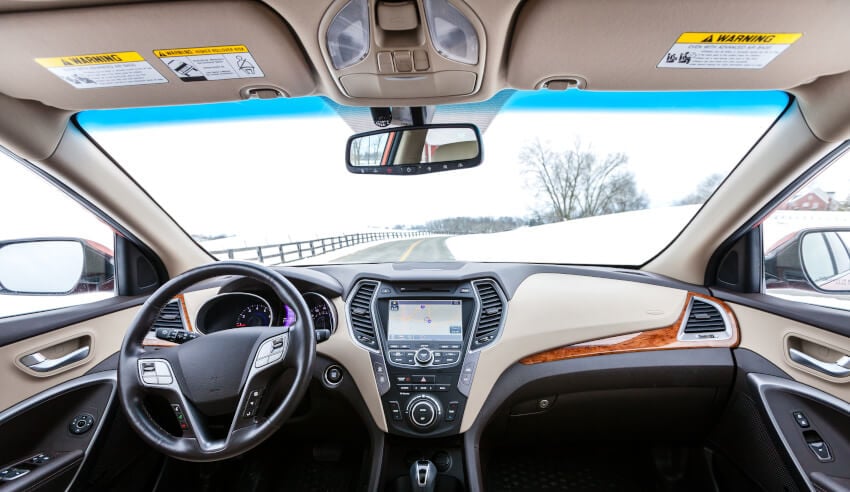Autonomous vehicles are here, but where is the law?
What was once confined to the realms of science fiction is now a reality: autonomous vehicles are coming at us faster than the law can keep up, writes Arthur Marusevich.

Commonly referred to as Automated Driving System (ADS), ADS is a type of driving automation system used in vehicles with a conditional, high or full automation modes.
To continue reading the rest of this article, please log in.
Create free account to get unlimited news articles and more!
This system is made up of complex hardware and software, designed to sense a vehicle’s environment and navigate it with limited or without human control.
Trials of ADS vehicles have been ongoing in Australia for quite some time. In 2015, the first on-road trial of highly automated driverless car was conducted in South Australia. Shortly after the trial, South Australia set up the first legislative scheme, allowing on-road trials of automated vehicles.
Other states soon followed suit, with NSW and Victoria also passing legislation to allow trials of automated vehicles on a permit basis. Despite these developments, a national consensus on ADS still does not exist.
What is the problem?
The main problem is that under Australia’s current transport law, an obligation to comply with traffic laws exists for a human driver only. The law does not envisage a situation in which an ADS, rather than a human driver, is the driver of a vehicle. This effectively means that currently no entity can be held responsible for an ADS vehicle.
For example, who bears legal liability in the event of an accident involving an ADS vehicle — the consumer or the manufacturer of the ADS vehicle? This is why ADS technology cannot be deployed yet.
But even if a regulatory framework could be designed, it would have to be done so in an environment of uncertainty. This is because ADS is a revolutionary technology and no country has yet set up a full end-to-end regulatory framework for it. As a result, any regulatory decisions in this context would also have to be made with extra care.
What is being done about it?
The National Transport Commission (NTC) has released a policy paper setting out recommendations for a legislative reform, approved by the Transport and Infrastructure Council. The policy paper forms part of NTC’s broader efforts to put end-to-end regulation of ADS by 2020, with a view to supporting the safe deployment and operations of automated vehicles at all levels of ADS.
To address the main problem of regulating ADS, the NTC has proposed a legislative reform that will recognise ADS as a “driver” and make it responsible for compliance with obligations associated with the dynamic task of driving. The NTC has also proposed additional duties and obligations for ADS outside the scope of its dynamic task of driving; however, it is understood that these duties and obligations will not exceed beyond what is within the control of the ADS while driving.
One example of a non-dynamic driving task that would also form part of the ADS’ duties and obligations is complying with a detour sign.
For those consumers travelling in ADS vehicles at conditional automation mode (SAE level 3), the NTC has also proposed a new readiness-to-drive obligation. Unlike in a Dedicated Automated Vehicle (DAV) which does not have a manual control facility that may enable it to be driven by a human driver, the concern with a conditional ADS is that in case of an emergency, a consumer must be ready and able to respond to the emergency.
Compliance and enforcement options, including offences, sanctions, and penalties have also been recommended by the NTC.
Opinion
ADS technology offers enormous benefits to us all. It could reduce accidents caused by human error, offer greater mobility to those unable to obtain a licence to drive, ease congestions, free up car parking spaces, and even increase our productivity by saving us the time we spend concentrating on driving.
To successfully deploy ADS at all levels of automation, the NTC’s recommendations are no doubt a commendable initiative. However, the issue of what legal remedies will be available to consumers involved in ADS accidents, still needs to be addressed.
At present, ADS companies operate in secrecy and refuse to share ADS data when their vehicles are involved in an accident — we saw this to be a major problem when an Uber vehicle was involved in a fatal accident.
If such business practices are allowed to continue in the future, it would mean that consumers involved in ADS vehicle accidents may not have the necessary ADS data to adequately prepare a claim. It will be interesting to see how the law addresses this problem as it continues to develop.

Arthur Marusevich is a lawyer based in Canberra. He uses his five language skills to help people from disadvantaged backgrounds. Having written his first book, Arthur is an aspiring novelist and aims to publish one novel a year.






